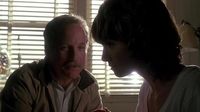It’s been half a century since a mechanical shark named Bruce terrorized moviegoers and forever changed Hollywood’s approach to the summer blockbuster. Now, as Jaws celebrates its 50th anniversary, the Academy Museum of Motion Pictures in Los Angeles has thrown open its doors to the public for a landmark exhibition that dives deep into the making, legacy, and enduring fascination of Steven Spielberg’s 1975 thriller.
On September 14, 2025, fans, film buffs, and the merely curious began streaming into the museum for “Jaws: The Exhibition,” the largest display ever dedicated to a single film in the institution’s four-year history. According to AFP and the Associated Press, the exhibition features more than 200 artifacts—production notes, original set pieces, rare props, behind-the-scenes photos, and memorabilia—carefully gathered from collectors, the director’s personal archive, and even the hands of those who worked on the original shoot in Martha’s Vineyard.
At the heart of the exhibition looms “Bruce,” the only surviving full-scale mechanical shark from the film’s production. Measuring a formidable 25 feet in length, Bruce has been a permanent fixture at the museum since its opening in 2021, quickly becoming what museum director Amy Homma called an “unofficial mascot” that “helped to define this museum.” But for the anniversary, Bruce is joined by a host of other treasures: the buoy from the chilling opening scene, a dorsal fin prop that once sliced through the waters of Amity Island, and even the real great white shark’s jaw that the filmmakers used as a reference—and, in a blink-and-you’ll-miss-it moment, on screen.
Visitors are encouraged to do more than just look. The exhibition is peppered with interactive elements designed to immerse guests in the world Spielberg and his crew painstakingly created. There’s a keyboard with instructions for playing John Williams’ Oscar-winning “da-dum-da-dum” theme—an ominous two-note refrain that’s haunted generations. Guests can also try their hand at a dolly-zoom setup, recreating the iconic shot of Roy Scheider’s Chief Brody as he realizes the true horror lurking offshore. For those who want to get mechanical, a model shark awaits, ready to be operated just as the crew did back in the day.
“It really was a cinematic treasure hunt,” curator Jenny He told AFP, describing the painstaking process of tracking down objects “that would put the story of Jaws together for our visitors in a tangible, physical way.” Among the most surprising finds was the buoy from the film’s opening. Spielberg himself marveled at its survival, asking, “How did anybody know to take the buoy and take it home and sit on it for 50 years?” The answer lies with Lynn Murphy, a marine mechanic who worked on the film and later sold the buoy to a collector in 1988. Now, it stands sentinel at the entrance to the exhibition, a testament to the film’s unexpected and enduring impact.
Spielberg, now 78, was just 26 when he began work on Jaws. At the exhibition’s opening, he spoke candidly about the chaos and uncertainty that dogged the production. “I thought my career was virtually over halfway through production on ‘Jaws’, because everybody was saying to me: ‘You are never going to get hired again,’” Spielberg recalled. “This film is way over budget and way over schedule, and you are a real liability as a director. So I really thought that I better give this my all, because I’m not working in the industry again.”
History, of course, had other plans. Jaws not only survived its troubled shoot—it became a cultural phenomenon, winning three Oscars and setting a new standard for cinematic thrillers. Its success spawned three sequels, countless imitators, and a legacy that continues to ripple through Hollywood today. As Spielberg toured the exhibition, he reflected on the journey: “The film certainly cost me a pound of flesh, but gave me a ton of career.”
The Academy Museum’s exhibition takes visitors on a chronological journey through the film’s three acts, with relics and recreations from virtually every scene. There’s a photo-friendly recreation of the Orca’s galley—the cramped boat where Scheider, Richard Dreyfuss, and Robert Shaw swapped sea shanties and compared scars. Film geeks can get up close to the aquatic cameras used by cinematographer Bill Butler, the Moviola editing machine that Verna Fields used to cut the film, and casting notes from Shari Rhodes and the team of screenwriters that included Peter Benchley, author of the original novel.
But the real draw, Spielberg insisted, is the spirit of collaboration that defined the production. “This motion picture industry is really truly a collaborative art form. No place for auteurs,” he told the Associated Press, emphasizing that the camaraderie of his crew was the glue that held the troubled production together. In fact, the making of Jaws was marked by long stretches of boredom—waiting out bad weather, unwanted ships drifting into frame, and seemingly endless mechanical failures with Bruce, the shark. The shoot ultimately ran a staggering 100 days over schedule.
Yet, as museum director Amy Homma announced, the legacy of Jaws is far from finished. The Academy Museum plans a full Spielberg retrospective in 2028, and the current exhibition is just one of many celebrations marking the film’s five-decade milestone, including a recent theatrical re-release. “Clearly this is a very historic initiative for us,” Homma said before introducing Spielberg at the media preview, which was accompanied by a live 68-piece orchestra—two of whom played on the original score—performing Williams’ music.
For Spielberg, the exhibition is a tribute not just to his own journey, but to the work of collectors and fans who preserved the film’s legacy. “What they’ve put together here at this exhibition is just awesome. Every room has the minutiae of how this picture got together,” he said, beaming with pride. “It’s a wonderful showcase of work by collectors who somehow knew something that I didn’t.”
As visitors leave the exhibition, perhaps humming the menacing theme or snapping a selfie with Bruce, it’s clear that the terror—and the magic—of Jaws still swims strong, fifty years on.
